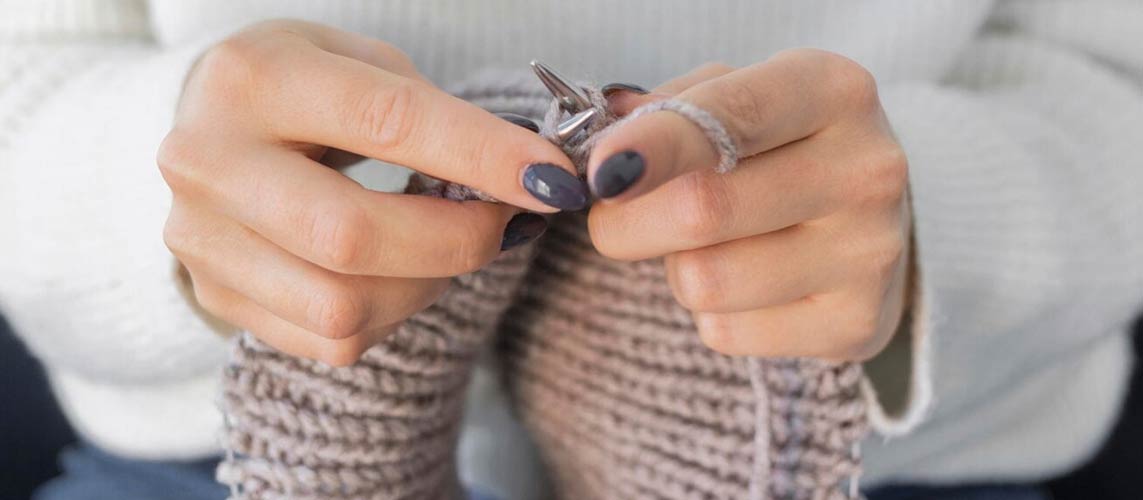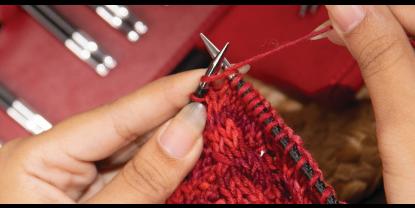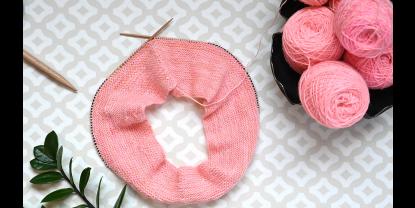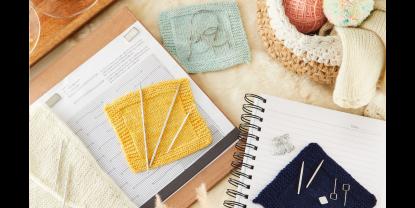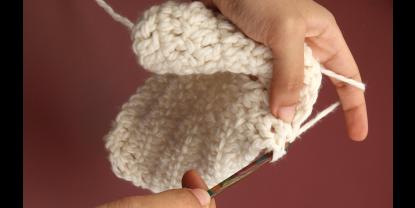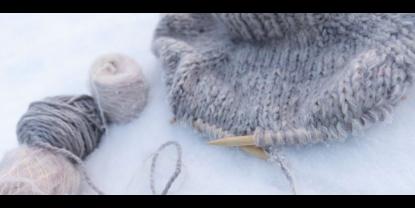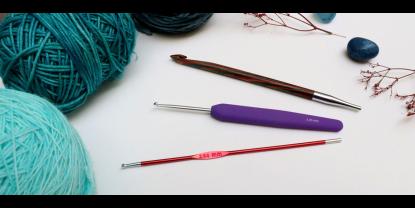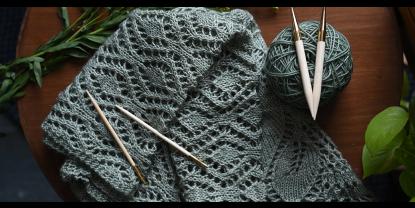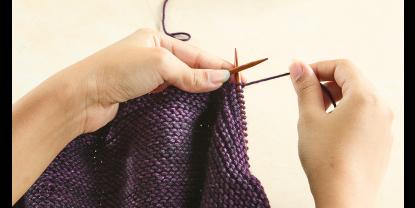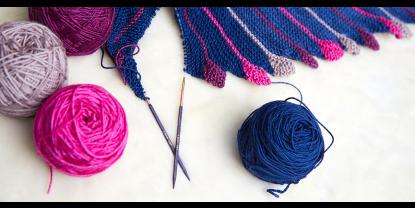In knitting, binding off the stitches is the final step in the completion of your project. When you’ve reached the end of your knitting project, the last row or round it’s time to bind off stitches (aka cast off). After you bind off, the project can be moved off the knitting needles. Binding off is an essential skill for any knitter to know, as it will secure the edge of your work so that it doesn’t unravel. Many times, it can also present as a decorative edge. If you’re a beginner knitter, learning to bind off is challenging. There are many ways to bind off stitches similar to the cast on methods. Each project requires a different way to bind off. In this blog, we’ll walk you through binding off your knitting to give your finished project a neat and tidy edge. Let’s get started!
What is a Bind Off?
In knitting, “bind off” is the technique that secures the stitches and prevents them from unraveling. It creates the finished edges on garments and other knitted projects before taking them off the knitting needles. Whether you work with single-pointed or circular needles for a flat project or work in the round with double-pointed (DPNs) or circulars, you’ll need to bind off stitches. The term “bind off” doesn’t refer to a specific technique but rather a whole category of techniques you can use to finish your last row of knitting. Like cats on techniques, there are many ways to cast off stitches, each with its pros and cons.
Written Patterns and Abbreviations
Bind-off is mentioned in knitting patterns as “Bind off all stitches” or “Bind off.” The general abbreviation is BO (or CO for cast-off). While some patterns may call for a particular bind-off method, many times they don’t and leave it up to you to make the choice.
With Bind Off and Cast Off often used interchangeably, knitters wonder what is to be used. Generally, “cast off” is more commonly used in the UK patterns, while “bind off” is more commonly used in the United States.
Types of Bind Offs
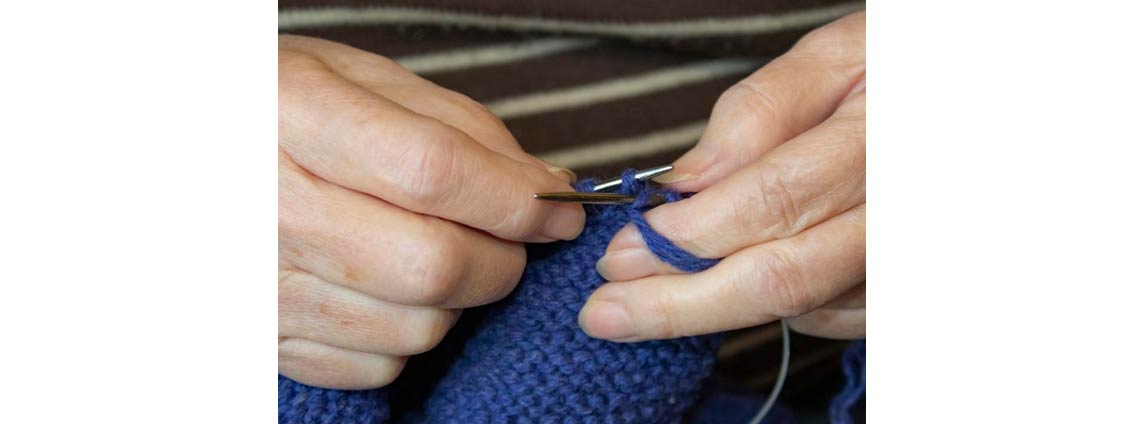
There are numerous techniques of binding off in knitting, which one you choose will depend on the type of project you’re working on, as well as your own preferences. While some patterns may indicate a particular binding-off method, there will be other times when it will be up to the knitter to choose the technique that best suits them.
For instance, when making the cuffs of mittens or socks, you’ll want to select a stretchy bind-off; but, a basic bind-off would be a more suitable choice when binding off the edge of a straightforward dishcloth, where elasticity isn’t necessary. If the knitting pattern does not include instructions for a specific bind-off, go with the standard method.
Step-by-step instructions to bind off (cast off) your knitting.
Step 1: Knit the initial two stitches, taking care to keep the tension of your stitches loose, so your binding off isn’t too tight.
Step 2: Use the left needle to insert into the first knit stitch on the right needle, then use the needle tip to raise the first stitch over the second stitch and off the needle, being cautious not to let the two stitches drop off the needle by accident.
Step 3: Knit the following stitch on your left needle.
Step 4: Repeat the aforementioned two steps until only one stitch remains on your right-hand needle.
Step 5: Cut the yarn, leaving a tail of around six inches, and draw the yarn through the last stitch, until the end pops through, then pull tight. The last step is to thread in the ends.
Alternatively, another way to finish the last step is to thread the yarn tail through the last stitch. Then remove the final stitch from the knitting needle. Thread the yarn tail through the stitch and tug on the yarn tail to tighten. Last, weave in the yarn tail to a darning needle to secure it.
You have now learned the basic procedure of binding off in knitting, a skill that can be utilised in many types of projects. Practice this technique until you feel confident, then give it a try in your next endeavour.
In case you come across the following terms in a knitting pattern, here’s what they imply.
Binding Off Knitwise - To bind off knitwise, you will have to knit the first two stitches on your needle. Then, using the left needle tip, lift the first stitch over the second stitch and off the needle, and continue this process until all the stitches have been bound off.
Binding Off Purlwise - The purlwise binding off method is identical to the knitwise one, the only difference being that you will be using purl stitches rather than knit stitches. Start by purling the initial two stitches on your needle to bind off purlwise, then, with your working yarn in the front, use the left needle to raise the first stitch over the second stitch and off the needle.
Binding Off in Pattern - If a pattern instructs you to “bind off in pattern, “you must work the binding off stitches the same way as the next pattern row. This makes the bound off edge consistent with the remainder of the knitted fabric. This will typically be used when binding off ribbing. This can also be used for particular designs for sweaters or cardigans.
Binding Off Loosely - If a pattern indicates that you should “bind off loosely”, then you have to maintain a relaxed tension when making the binding off stitches. If you’re having difficulty keeping an intentionally loose tension, try using a needle one or two sizes bigger than the needle you utilised for the body of your project, which will help you form an elastic binding off that doesn’t draw in.
Tips for Binding Off
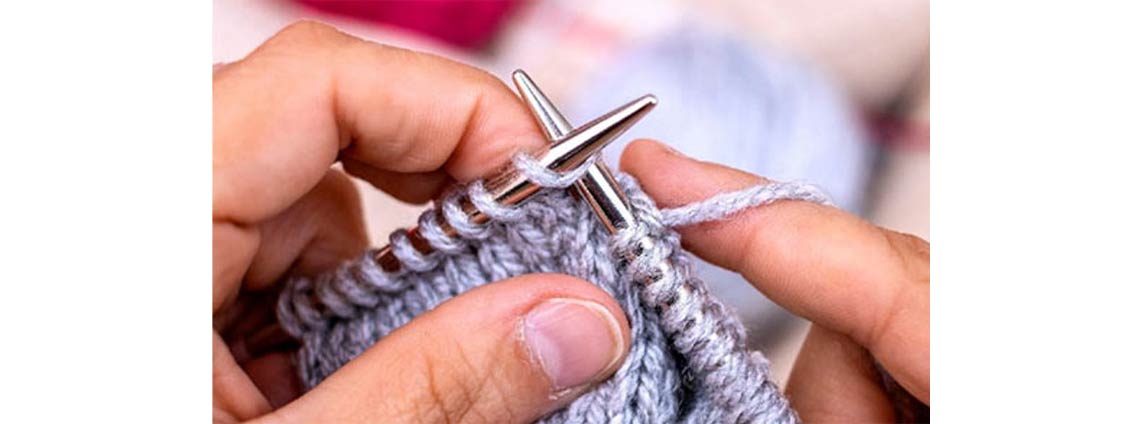
Here are a few things to remember.
- Knit with loose tension. Similar to cast on, don’t pull too tightly on the yarn as you work each stitch to avoid a tight, difficult-to-stretch edge.
- Switch to one knitting needle size larger than recommended, if you are a tight knitter.
- Count your stitches as its common to accidentally drop a stitch when binding off.
With this, get ready for a professional-looking neat finish on all of your knitting projects. The Mindful Collection is your aid for mindful knitting. The range of smooth stainless steel knitting needles carries an inspirational word, the knitting needles are a tool for mindfulness and a smooth knitting experience. Along with needles, explore the wide range of accessories.
Happy knitting!


